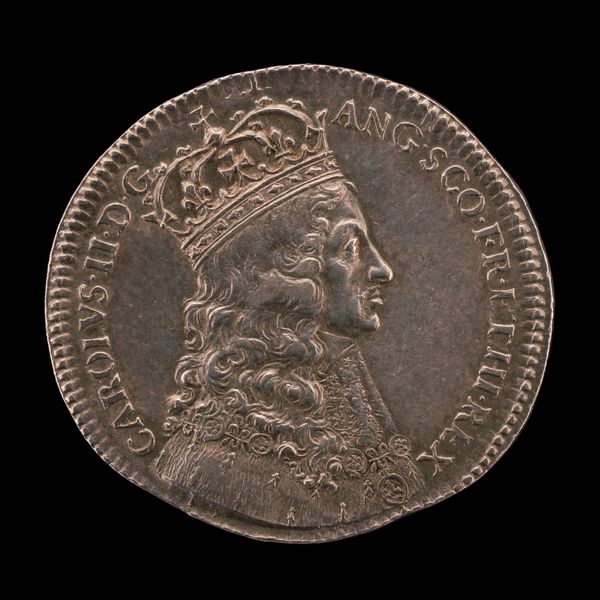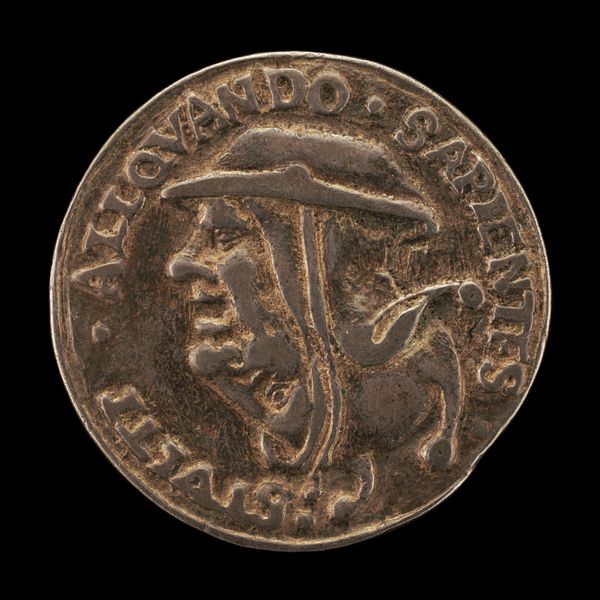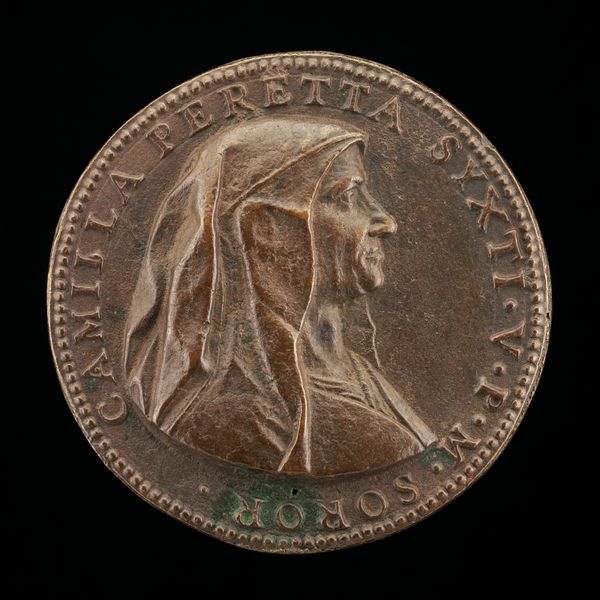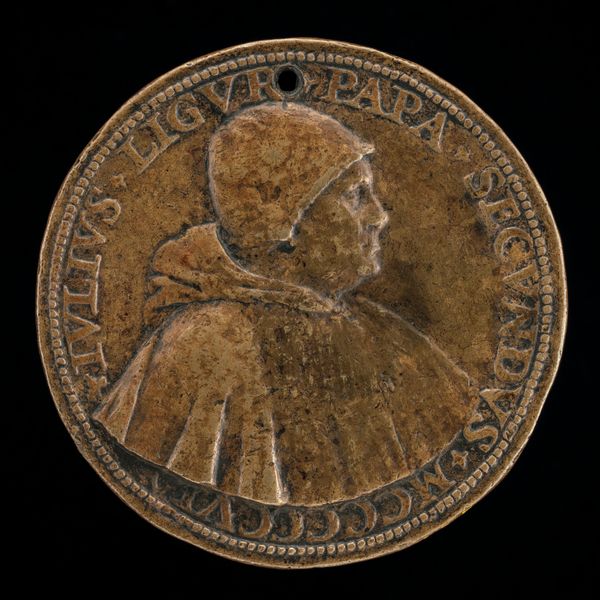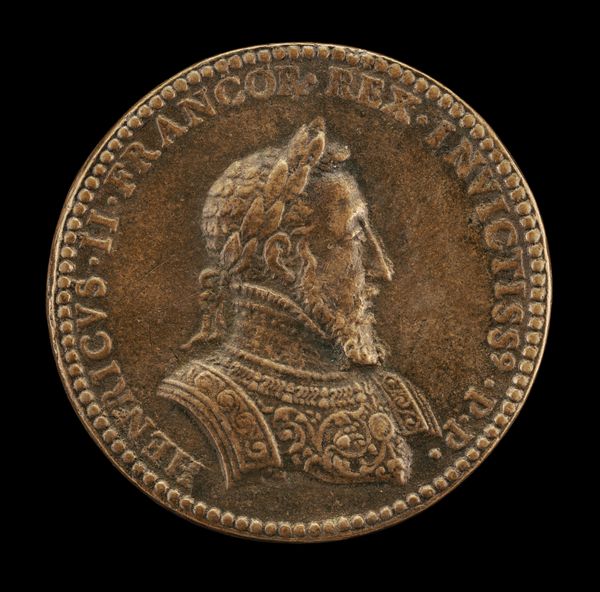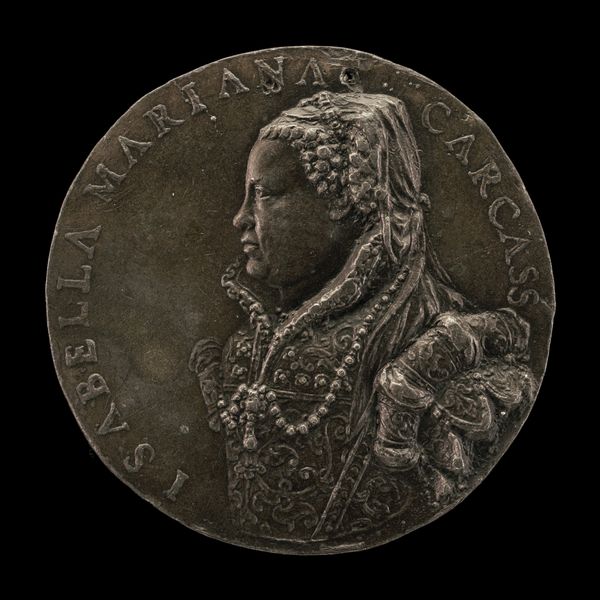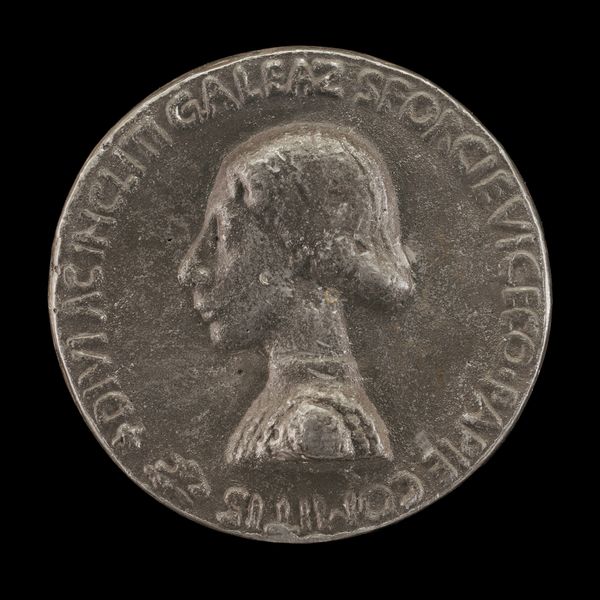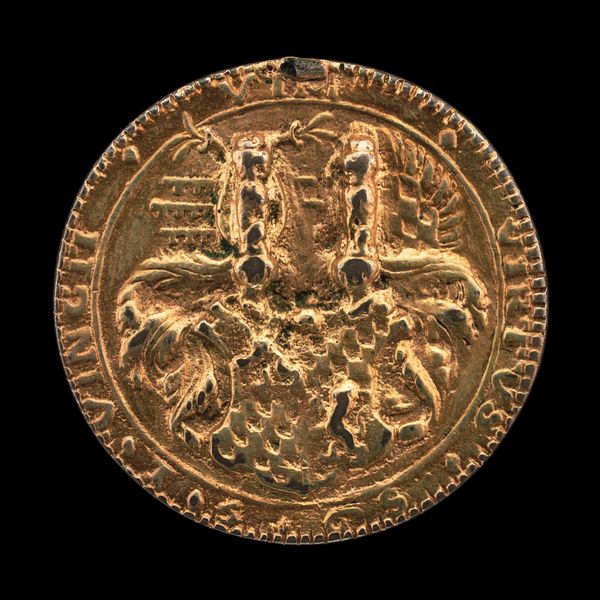![Cristoforo Moro, 1462-1471, Doge of Venice [obverse] by Antonello della Moneta](/_next/image?url=https%3A%2F%2Fd2w8kbdekdi1gv.cloudfront.net%2FeyJidWNrZXQiOiAiYXJ0ZXJhLWltYWdlcy1idWNrZXQiLCAia2V5IjogImFydHdvcmtzLzc2MWU4ZDdhLTFiMTUtNDc2ZC04NjkwLTYzMDI4ZDUyNjI5NC83NjFlOGQ3YS0xYjE1LTQ3NmQtODY5MC02MzAyOGQ1MjYyOTRfZnVsbC5qcGciLCAiZWRpdHMiOiB7InJlc2l6ZSI6IHsid2lkdGgiOiAxOTIwLCAiaGVpZ2h0IjogMTkyMCwgImZpdCI6ICJpbnNpZGUifX19&w=3840&q=75)
Cristoforo Moro, 1462-1471, Doge of Venice [obverse] c. 1462s
0:00
0:00
metal, relief, bronze, sculpture
#
medal
#
metal
#
sculpture
#
relief
#
bronze
#
11_renaissance
#
sculpture
#
italian-renaissance
Dimensions: overall (diameter): 4.03 cm (1 9/16 in.) gross weight: 36.58 gr (0.081 lb.) axis: 1:00
Copyright: National Gallery of Art: CC0 1.0
Curator: Here we have a bronze medal, a portrait of Cristoforo Moro, Doge of Venice. It dates from around the 1460s. The artist, Antonello della Moneta, has captured Moro in profile. Editor: The patinated bronze lends it such somberness. And the small scale—there’s an intimacy, a sense of something weighty and profound held right in your palm. Curator: Indeed. The portrait encapsulates the essence of leadership through Renaissance ideals. The profile, a classic motif harking back to ancient Rome, emphasizes noble virtues like stoicism and clear-sightedness. It’s not merely a likeness but a symbolic representation of authority. Editor: Observe the rendering of the textures! From the intricate embroidery on his garment to the subtle etching of his skin. It seems intended to invite the touch— almost a form of haptic visuality. Curator: Every aspect carries significance. Take his hat, a ‘corno ducale’, a horn-shaped bonnet, signifying his ducal rank and alluding to the power vested in him as the head of the Venetian state. The meticulous attention given to detailing is noteworthy, presenting not only his authority but the overall image of Venice. Editor: Note how the inscription frames him. Functionally, it names him, but also the tight, seriffed lettering almost visually corrals his authority into the tiny, compressed space of this little coin. Curator: A carefully planned iconographic schema aims to influence perception, emphasizing political power. Remember Venice's image as a dominant force in the Adriatic and a cultural powerhouse. The artist is reminding viewers about that image with Moro standing in. Editor: The slight turn of the head, that distant gaze. It prompts contemplation about his rule, his legacy and also the inherent paradox of reducing a man to such material dimensions. It makes him feel both present and absent. Curator: It makes us consider that, even when someone in the present considers history, this still offers a portal into the past—how these images and people and even their achievements persist and morph into myth and symbols. Editor: Exactly, the careful application of form to communicate not only facts, but the cultural context that surrounded those facts is the goal of a piece like this.
Comments
No comments
Be the first to comment and join the conversation on the ultimate creative platform.
